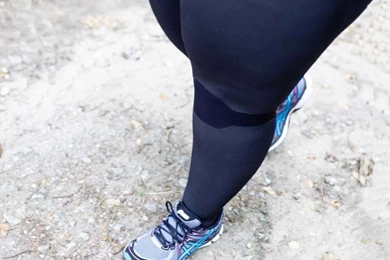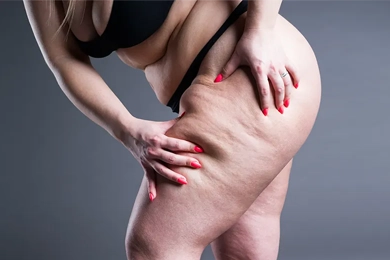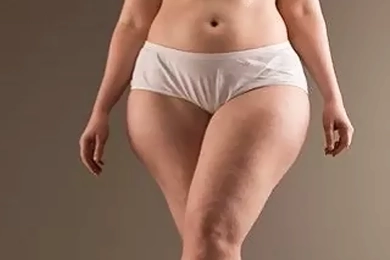
An excessive buildup of adipose tissue (fat) in the lower body is known as lipedema, a chronic illness that frequently causes pain, discomfort, and limited movement. Using customized compression clothing, sometimes referred to as lipedema socks, is one of the supportive treatments for treating the symptoms of lipedema. We shall explore the many facets of lipedema socks in this blog post, covering their varieties, applications, advantages, and length of use.
A particular kind of compression garment called lipedema socks is made expressly to apply varying degrees of pressure to the legs. A reduction in the discomfort and swelling associated with lipedema may result from this pressure. These socks are made specifically to satisfy the needs of people with lipedema, therefore they differ from standard compression stockings in terms of material, pressure levels, and design.
One advantage of lipedema socks is their ability to promote lymphatic drainage and blood circulation through the application of moderate pressure to the legs. This, in turn, can lead to a reduction in swelling and an alleviation of pain.
People who have been diagnosed with lipedema are the main users of lipedema socks, particularly those who have swelling, pain, and movement problems. Before using these socks, it's crucial to speak with a healthcare professional, as they may advise on the best kind and pressure based on a patient's specific needs.
Graduated Compression: Lipedema Socks with Graded Compression Types These exert different amounts of pressure; typically, they are tighter toward the ankle and looser toward the knee or thigh.
Flat Knit vs. Circular Knit: Circular knit socks are more elastic and simpler to put on, whereas flat knit socks are more rigid and provide more exact compression.
Custom-Made vs. Off-the-Shelf: Compared to off-the-shelf socks, custom socks offer a superior fit and efficiency since they are produced to the wearer's precise measurements.
Duration of Use
The severity of the ailment and the person's lifestyle determine how long and how often to wear lipedema socks. While some people might only need to wear them during specific activities or times of the day, others could need to wear them every day. It's crucial to routinely speak with a healthcare professional to modify usage as necessary.
Followinglipedema surgery, the use of compression garments, or lipedema socks, is an essential part of post-operative care and recuperation. After removing unwanted fat deposits with lipedema surgery, such as liposuction, the body is shaped, swelling is reduced, and circulation is improved with the use of compression garments. Here is a detailed instruction explaining how to use lipedema socks following surgery, along with important things to consider and how long to wear them for.
1. When to Start Using Lipedema Socks
It is often advised to put compression garments on as soon as possible following surgery. Specific guidelines, however, can change based on the kind of surgery and the advice given by your surgeon.
2. Choosing the Right Compression Garment
Fit and Compression Level: Regular lipedema socks should not be as compressive as post-surgery clothes. Though they shouldn't be too tight to impede circulation, they should fit snugly.
Type of Garment: Generally speaking, it is advised to wear full-length clothing that covers the entire surgical site. Depending on the procedure done, your surgeon will recommend the best kind.
3. Wearing the Garments
Duration: At first, the compression garment might need to be worn around-the-clock; you might only need to take it off to take a shower or as your surgeon instructs.
Consistency: Effective recuperation and shaping need on consistent use.
1. Monitoring for Complications
Be alert for any indications of discomfort, changes in the skin, or poor circulation. Get in touch with your healthcare professional right away if you experience extreme pain, skin color changes, or any other strange symptoms.
2. Skin Care
To avoid irritation or illness, keep the skin beneath the clothing dry and clean. Keep an eye out for any indications of discomfort or pressure marks on your skin.
3. Hygiene of the Garment
To avoid infection, keep the garment clean. Having multiple clothes can come in handy as you can wear one while doing the washing.
4. Adjustment and Fit
The garment's fit will alter as the swelling goes down. To modify the compression level and fit, it's critical to schedule routine check-ups with your physician.
Depending on the extent of the surgery and the patient's healing phase, there are different guidelines for how long to wear lipedema socks after surgery. The following are some broad recommendations:
In conclusion
An essential component of the healing process following lipedema surgery is wearing lipedema socks. Observing the precise guidelines provided by your surgeon concerning the kind, fit, and length of usage is crucial. Keeping track of your progress and modifying the compression therapy as necessary require routine follow-up consultations. To get the best results, keep in mind that every person's road to recovery is different, so receiving individualized care and paying attention to how your body reacts to the treatment are essential.
In summary,
One important tool for controlling lipedema symptoms is a pair of lipedema socks. They provide a non-invasive means of reducing pain, swelling, and enhancing range of motion. To guarantee they are safe and effective, it is essential to use them under the supervision of a healthcare provider. Lipedema socks have the potential to greatly improve the quality of life for individuals who suffer from this ailment when used appropriately.
Never forget to get medical advice before beginning any new treatment. The type and usage of the socks must be adjusted through routine follow-ups. Better outcomes can be seen when compression therapy is combined with other therapies like nutrition, exercise, and manual lymphatic drainage.
Lipedema socks serve as a supporting tool in the management of lipedema, going beyond simple clothing. People can actively participate in their treatment plan and make educated decisions if they are aware of the types, benefits, and appropriate usage of these resources.
By increasing lymphatic and blood flow and providing graded compression to the legs, these socks assist lessen the pain and swelling that come with lipedema.
Lipedema socks are beneficial for people with lipedema, particularly those who are swollen, in pain, or have trouble moving around.
No, lipedema socks don't cure lipedema; instead, they help control symptoms and may even stop the illness's progression.
Yes, there are many different kinds available, such as off-the-shelf, custom-made, circular knit, flat knit, and graduated compression socks.
The socks ought to be just right—not too tight as to impede circulation. A healthcare provider should ascertain the appropriate pressure level.
Many wear them during the day and take them off at night, however this might change depending on personal preferences and medical guidance.
To help stretch the sock, use gloves or a donning device. Make sure the sock is smooth and wrinkle-free by bunching it up and slowly unrolling it up your leg.
They can persist for several months if taken care of properly. But if they get damaged or lose their elasticity, they might have to be replaced.
While hand washing in warm water with a light detergent and letting them air dry is the preferred method, some can be machine washed in accordance with the manufacturer's instructions.
Coverage differs by nation and insurance plan. They might be covered by certain insurance plans if a doctor's prescription is provided.
Generally speaking, removing them at night is advisable, unless your healthcare physician instructs you otherwise.
Yes, they come in a variety of colors and styles, but the most important factors should be fit and practicality.
A healthcare professional's measurements are usually used to establish the proper size to provide a secure and comfortable fit.
Yes, lipedema may affect anyone, and if their doctor recommends it, guys who have lipedema can wear these socks.
When worn correctly, there are very few negative effects. When used incorrectly, it might cause discomfort, rashes on the skin, or circulation issues.
Yes, a lot of people feel that wearing them helps to increase comfort and prevent swelling when exercising.
Compared to standard compression stockings, lipedema socks may offer various materials and pressure gradients because they are made especially for the condition.
They should usually be changed every three to six months, depending on elasticity loss and wear and tear.
Yes, by enhancing circulation and decreasing edema, they can aid in lessening pain related to lipedema.
 Lipedema Treatment with VASERLipo (Vaser Liposuction)
Lipedema Treatment with VASERLipo (Vaser Liposuction)A chronic illness called lipedema, which mainly affects women, is characterized by an abnormal build-up of fat, generally in the arms but also in the legs. ...
 Unveiling Lipedema: Treatment, and the Benefits of Vaserlipo
Unveiling Lipedema: Treatment, and the Benefits of VaserlipoLipedema is a common illness that often goes undetected or is misunderstood. It is a chronic condition characterized by aberrant fat cell buildup in the legs and, in some cases, the arms. ...
 Lipedema Diet
Lipedema DietLipedema is a persistent medical condition that predominantly impacts women and manifests as an abnormal accumulation of fat in particular body regions, including the legs and occasionally the limbs. ...